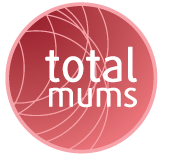We all recognise that breathing is a vital function, but many of us do not realise just how important it is to breathe well. It is easy to take our breathing for granted – we’ve literally been doing it since the day we were born.
But when we don’t breathe with an optimal pattern, we become vulnerable to uncomfortable physical and mental symptoms. To quote breathing expert Tania Clifton-Smith from Breathing Works, how we breathe affects “the way we feel, the way we look, the way we move, the way we function, the way we present ourselves and the way we speak”.
Maintaining an optimal breathing pattern is not always easy, however, because how we breathe changes in response to physical and mental factors. Our breathing can change in response to getting a fright or running a race, for example, or we might gasp when we hear that our child is injured, or breathe in large volumes of air as we cry. These changes in our breathing pattern are okay if they are temporary and we return to our optimal baseline pattern, but in this busy modern world where we are exposed to more information and stress than ever before, it is easy to develop poor breathing patterns without even realising.
Signs of disorder
Parents are especially vulnerable to developing poor breathing patterns as they are in a particularly challenging phase of life, ie time-poor, often rushing and constantly in demand, not to mention juggling several different roles. On top of these mental demands, women go through hormonal and physical changes during pregnancy that can affect their breathing habits. Then in the postnatal period they can experience fatigue, aches and pains, and sometimes depression, all of which can influence breathing.
As a result, it is not uncommon for parents to experience symptoms that can be caused by disordered breathing, such as intense fatigue, headaches, backaches, feelings of depression or anxiety, problems with the digestive system, brain fog, lowered…
Click here to download and read the article (pdf)
